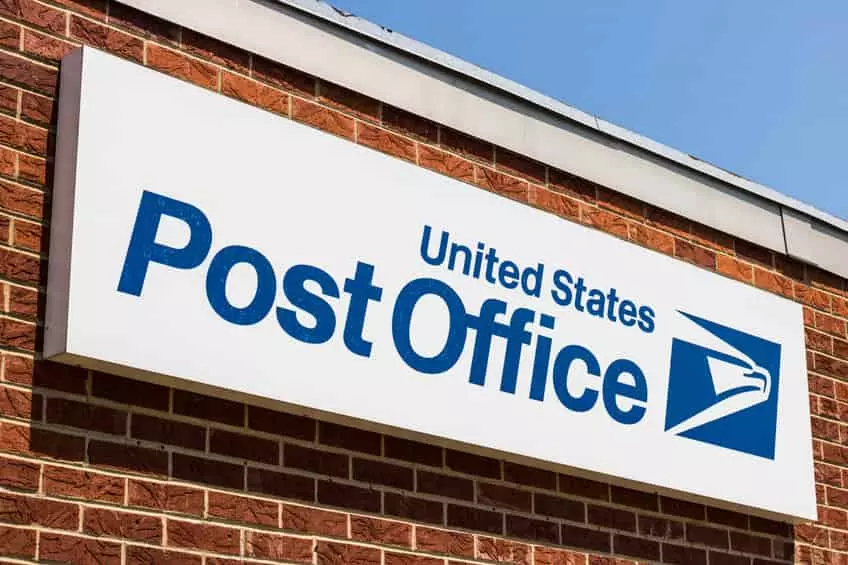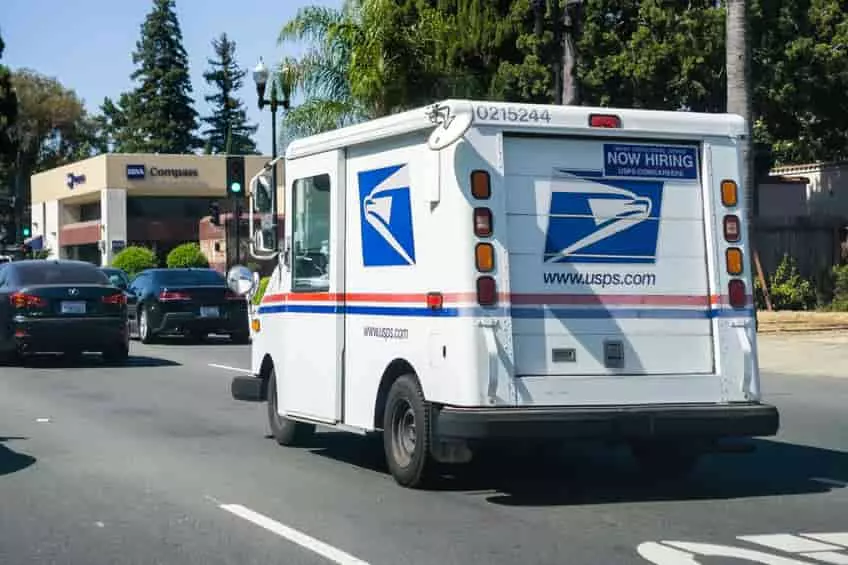
Of all agencies and organizations Americans think of as somehow affiliated with the United States government, the United States Postal Service is the largest of them all. The postal service employs more than 600,000 people across the United States. In comparison, only shipping giant Amazon and big box store Walmart employ more people nationwide. The U.S.P.S. serves at least 160 million delivery points, including both homes and businesses. Economically, the U.S.P.S would rank 44th on the Fortune 500 list in 2019. Speaking of finances, in recent years, the United States Postal Service has undergone a number of issues that have weakened its financial status significantly.
The COVID-19 pandemic is only the latest issue that the U.S.P.S. has had to weather financially. Not only has the Postal Service had to meet increased demand that shipping entities such as Amazon or UPS has also seen, but the U.S.P.S. has had to do so on an already fragile financial footing.
How is the Postal Service Governed?
The first Postmaster General of the United States was none other than one of the Founding Fathers, Benjamin Franklin. He was appointed to this position by the Second Continental Congress in 1775. The Post Office Department was created by 1792, almost two decades later. It would be 1872 before the Post Office would become a part of the president’s cabinet.
However, one century later, in 1971, Congress voted to replace the Department with the USPS, which was intended to be an independent organization under the purview of the president’s office. Today, the U. S. Postal Service is operated by a Board of Governors, an eleven-person group that includes the Postmaster General and his deputy as well as nine governors from across the United States. These governors are appointed to the position for seven years, but the Senate must approve their appointment. There is a separate Postal Regulatory Commission that oversees the U.S. Postal Service, including the rates which the U.S.P. S. uilizes. This commission includes five members appointed by the President; these five individuals must be approved by the Senate as well.
What is the method by which the USPS is financed?
Americans might be surprised to learn that the U.S. Postal Service receives no taxpayer funds directly, or at least, not until the last decade or so where the organization has been bailed out by government funding or loans. Typically, the Postal Service has relied on revenues from the sales of stamps or other services in order to continue operating. However, the U.S.P.S. has proven to be financially unsustainable for several years in a row. When the pandemic hit the United States, COVID-19 only further showed the financial weaknesses in the organization.
What long-term issues have been found within the way the USPS is funded?
While the method by which the U.S.P.S. currently operates – using the revenues from the sales of stamps or other services – is enough to keep the organization running day to day operations, it is the employee pension program as well as retiree health care liabilities that continue to eat away at the bottom line of the organization. In fact, the U.S. Postal Service has operated in the negative since 2007. Between 2008 and 2018, the U.S.P.S. reported losses of $69 billion. When looking at fiscal year 2019, the U.S. Postal Service took in $71.1 billion of operating revenue only to lose $8.8 billion that same year.
The rise of electronic communication, including email, the U.S. Postal Service has seen the volume of First Class mail shrink from 103.5 billion pieces during the year 2000 to just under 55 billion pieces in 2019.
The U.S. Postal Service has also seen a rise in its competition. The U.S. Postal Service has attempted to compete with UPS and FedEx in the area of parcel delivery, but even a delivery deal with Amazon couldn’t push the Postal Service ahead of the competition. The U.S. Postal Service has tried to increase delivery of marketing mail as well. However, as of 2017, the U.S.P.S. has only held a nineteen percent market share of package deliveries in the United States.
The U.S. Postal Service has a commitment, demanded by law, that the organization provide universal service – “as nearly practicable the entire population of the United States.” Ironically, each year, although there are fewer pieces of mail, the U.S.P.S. is delivering to more addresses each year.
It is also notable that the “blue boxes” one may see across towns and cities – the blue boxes where one can drop off mail without having to physically walk into the post office – have been reduced each year. There are now only 140,837 of them.
Why do the pensions seem to causes losses to the U.S. Postal Service?
One of the greatest financial liabilities that the U.S.P.S. has today is the Post Service Retiree Health Benefits Fund. The Postal Service has always provided a pension for its retired employees, much like private organizations. By law, the U.S. Postal Service is required to earmark money from the organization’s current income in order to fund the future pensions of said retirees.
The U.S. Postal Service also provides health benefits for its retirees. The private sector does not always do this, but most government programs do. However, the United States Postal Service is required under the Postal Accountability and Enhancement Act of 2006 (also known as PAEA) to fund future retiree health costs out of current income. The PAEA legislation is unique to the U.S.P.S. only, and no other business entity – private or public – is required to set aside funding for future health benefits before paying them out in such a way that the U.S.P.S. has to. This is the single greatest issues regarding the sustainability of the U.S. Postal Service.
In the early 2000s, a governmental agency found that the U.S.P.S. had been significantly over-paying into its employee pension fund. This provided the Postal Service with more money than liabilities when it came to meeting the organization’s employee retirement liabilities. In addition, the Postal Service had had a strong financial performance during the same time. It was expected that the Post Office could use this opportunity to “catch up” on its method of funding retirement benefits for its employees.
The passage of PAEA gave a stricter formula to what must be paid by the U.S.P.S each year in order to fulfill its obligations to retirees. Each year the organization was to contribute around $5.6 billion each year between the years of 2006 and 2017 to the employee retirement funds. Then, the U.S. Postal Service is supposed to sustain any additional obligations between the years of 2017 to 2056.
After years of doing well in the way of raking in revenues, in 2007, the Great recession took a toll on the revenue of the U.S. Postal Service. In addition, the rise of digital communication further added insult to injury. Since 2010, the U.S. Postal Service has missed a whopping $42.6 billion of its required payments according to PAEA on the pension and health benefits of employees since 2010.

What type of hindrances has the COVID-19 pandemic put on the finances of the Postal Service?
The pandemic has put a significant burden on the finances of the U.S. Postal Service. The organization has seen an increase in paid sick leave as well as the lack of ability to use air transportation for delivery of packages. Low customer demand as well as the cost to provide PPE – personal protective equipment – to all employees during the pandemic have wreaked havoc on the solvency of the U.S. Postal Service.
However, shipping revenues from packages have risen by just over fifty percent in the second quarter of 2019. This has lowered the U.S. Postal Service’s total in the red for the year from $2.3 billion to $2.2 billion.
At the same time, the increased revenue from packages is not expected to offset the decrease in marketing mail volume as well as First-Class mail volume. Both of those numbers are down significantly as well.
What has Congress done to mitigate the financial woes of the USPS?
Congress provided an emergency loan in the amount of $10 million to the U.S. Postal Service as a part of the CARES Act. According to figures released by the U.S.P.S. in its 2020 Quarter 3 Fiscal Report, this amount will cover immediate financial needs.
Yet, the CARES Act imposed some conditions on the U.S. Postal Service that caused then-vice chairman of the board of the Postal Service to resign. David Williams, a former inspector general for the U.S. Postal Service, claimed that the conditions would turn the U.S.P.S. into nothing more than a political tool.
Ironically, the loan did not solve the financial woes of the U.S.P.S. The loan simply postpones it. Recently, the House of Representatives passed a bill that would provide $25 billion in additional government funding to the Postal Service. The bill would also mandate that the organization must reverse any policy changes that had led to delays in the delivery of mail. The organization must also keep from introducing any new policies that would hinder the delivery of mail until the end of the pandemic.
This particular bill is unlikely to pass in the Senate.
What has the current Postmaster General (Louis DeJoy) done since taking the position?
During his time in office, President Trump directed then Treasury Secretary Steve Mnuchin to create and lead a task force group which would delve into the financial issues of the postal service.
In December 2018, the Task Force produced a report that urged the U.S. Postal Service to increase prices while cutting costs at the same time. Mnuchin also assisted in recruiting the new Postmaster General, Louis Dejoy. Dejoy had a background in logistics, which could be beneficial to the organization.
By the time DeJoy was sworn in as Postmaster General in June 2020, efforts to cut costs were already underway at the U.S.P.S.
Internal memos have been published in which new policies to prevent late departure of mail is outlined; some of these policies mean leaving on time, even if there is mail left on the workroom floor.
In August 2020, during a hearing before the House Committee on oversight and Reform, DeJoy testified that he didn’t order the removal of blue boxes or the removal of mail collection equipment. He said he did not cut back the hours on any postal service offices. He also stated that he did not order the cutback in overtime.
By the time these Congressional hearings were completed, DeJoy promised he would reverse these policies until after the November 2020 election.
Instead, DeJoy had to insure that postal offices across the country – even in the smaller towns where the hours had been cut back tremendously – were open at their normal hours each day. He also had to return many of the blue boxes that had been collected from streets and businesses. He also changed the overtime policy back to its original state. Finally, DeJoy had to replace the equipment that had been removed.





